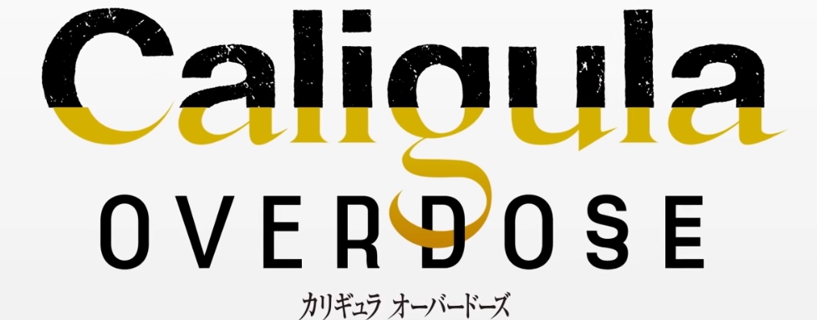Which are you, the mask or the face underneath?
Switch: Released
PS4: Released
Genre: JRPG, Turnbased
Developer: FURYU Corporation,
Engine Software BV
Publisher: NIS America, Inc.
Release Date: march 12 2019


Caligula Effect: Overdose uses its role-playing JRPG game style to address a very different type of subject matter and it does so in a very well thought out manner with effectiveness. It looks at the darker aspects of our psyches, exploring the grey areas of socially unacceptable behavior, hatred, gender issues, and more. This surprised me immensely because I was thinking I’d be playing a high school buddy-group game where team members would fight the bad guys and create of tale of adventure. The truth is, that is simply a platform for the larger message of looking at who we really are when the door is closed and no one is looking. Who would you be if there were no societal restrictions? Would you prefer your real life or would you prefer a virtual one where you could re-event yourself? How black and white are the distinctions between good and bad in that event and what happens to your concept of morality? Caligula Effect: Overdose really illustrates that the answers are not so obvious once your true heart is revealed.
Story
The game drops you into the story without much of an idea about what is going on. Essentially your character, of whichever gender you prefer, is trapped in a virtual world by a virtuadoll AI that has created a world for people to escape to and be in high school forever a la Sword Art Online or the Matrix. You start out at a school roll call for the day, although it is all very odd because the announcer introduces students to a podium to speak, and yet there is no speech until near the end of the scene followed by some quick action cutscenes when the protagonist realizes that some people have crazy de-rezzed looking faces.
I have to say that this beginning feels very jerky with scene setups that have no follow through and dramatic situations which aren’t tethered well to the action or sequence of events. You’ll run across an area with someone and expect to do something, followed by something completely different or just dialogue. Also, without even a smidgen of backstory at the beginning, or at least some idea of the events playing out, it makes the scenes feel strung together by the loosest of connections. About 20-30 minutes of mild confusion goes by before some of this is explained, even though it ends up in the usual rag-tag happy-go-lucky band of high school students primed on escaping the clutches of a virtuadoll gone all Detroit Become Human.
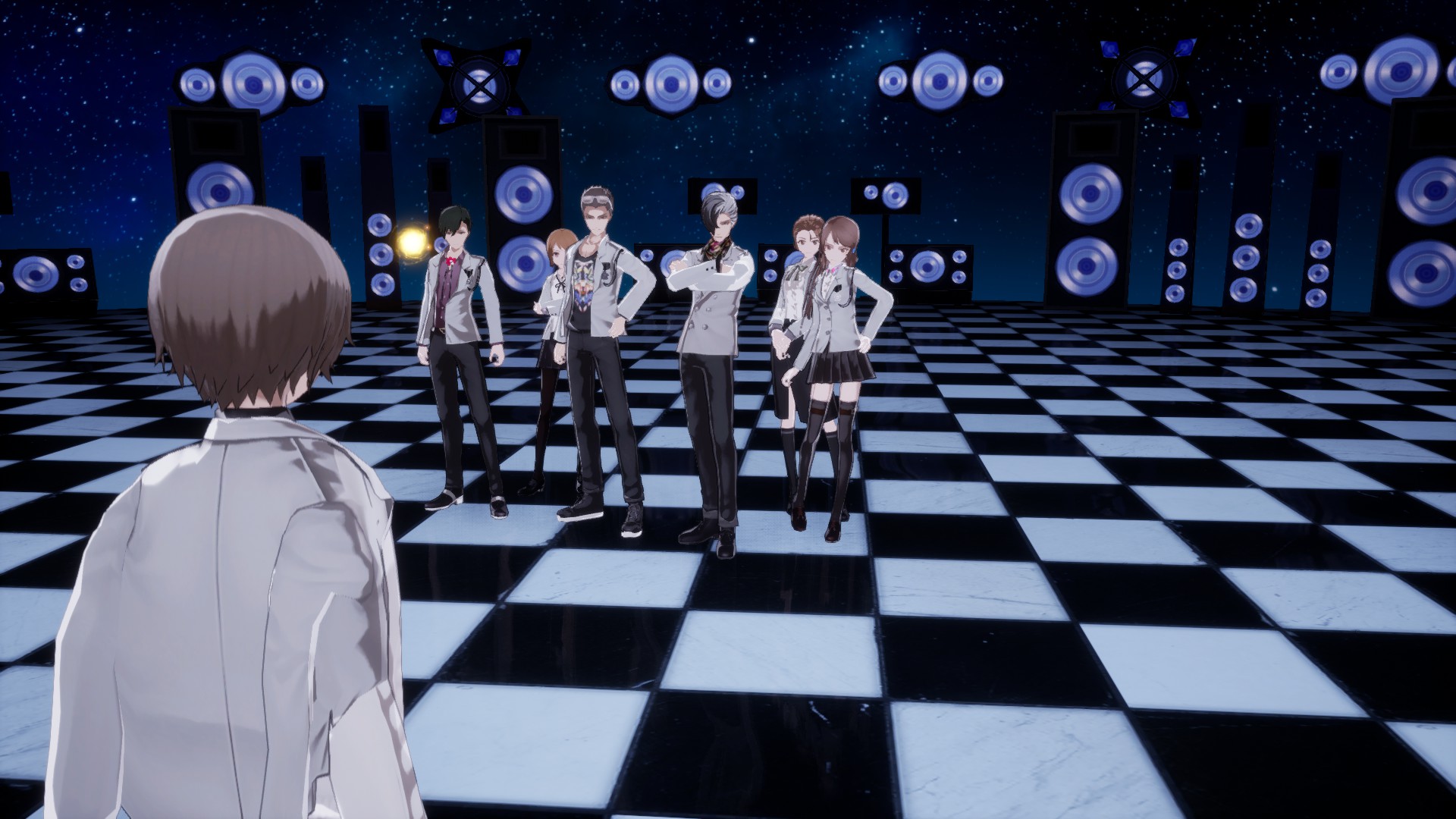
Once everyone gets together to explain things, calling themselves the Go Home Club, you begin to feel at ease with the game story. There are two virtualdolls. One is called μ, who has gone too far with her programming and invented this virtual world called Mobius where you live your heart’s desire as a young high schooler forever whether you want to or not, and another virtuadoll named Aria who helped μ create this world, but wants to stop everything and let people out now. For whatever reason Aria is now your bestie and focuses your ability to use the Catharsis Effect, the physical weaponized manifestation of your inner heart and soul. The other members of your party manifest these abilities as well, and then the gang decides to take down μ and get back to reality.
You would think that’s the whole of the story and roll credits, but no. As you progress, you realize two very crucial differences in this game compared to other JRPG’s.
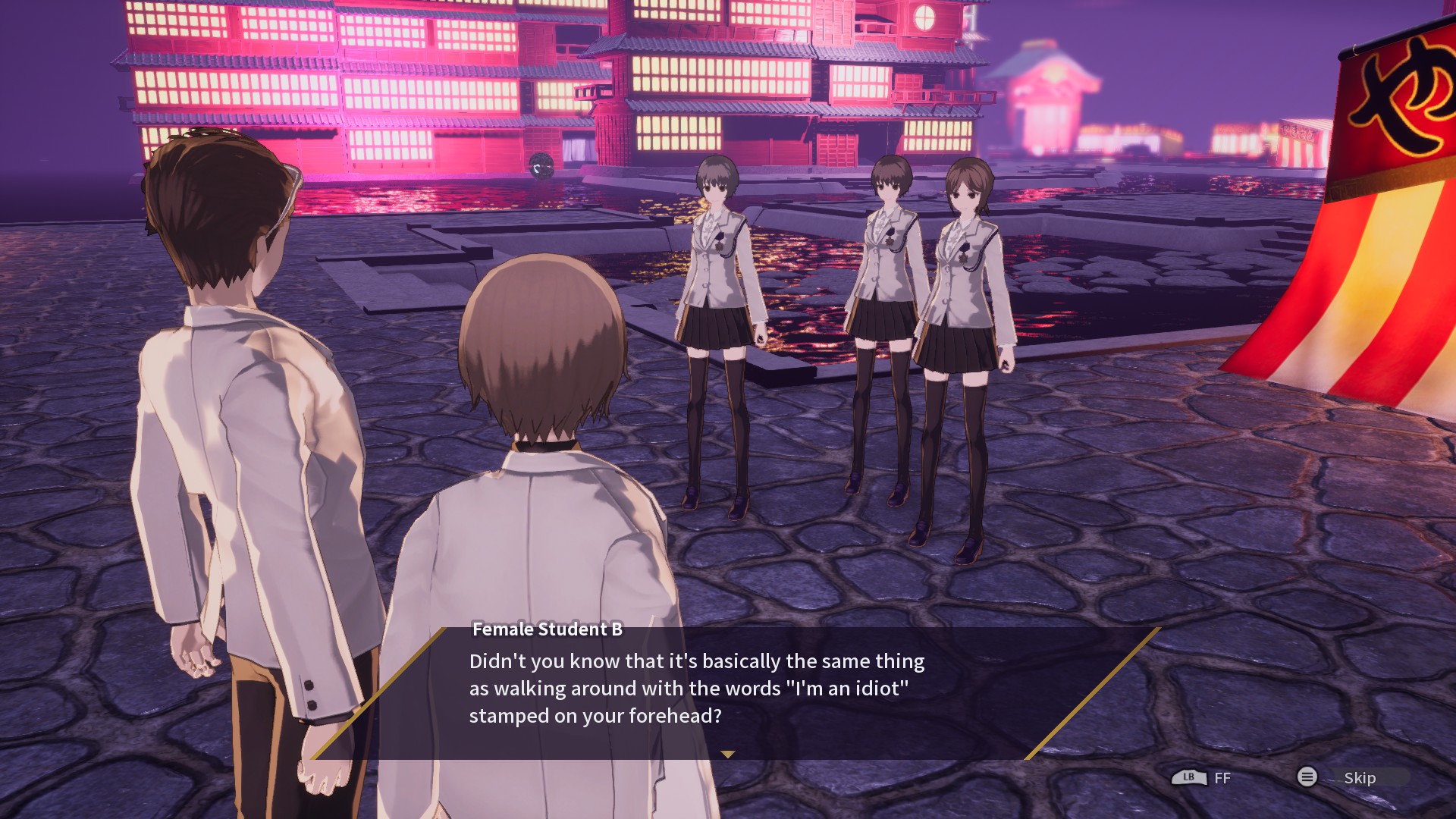
The first is that each member has some sort of psychological hang up ( don’t we all ), and in Mobius it’s like they can’t keep it to themselves. One girl in particular lets loose some seriously offensive insults against anyone obese, to the point where the group is even asking why all these terrible things are coming out of her mouth. Another one is a guy who wants to be the strong man in the group, someone who absolutely has the pure desire to be a hero even when he is not suited to be in every situation. You’ll even come across a bad guy, from the opposing Ostinato Musician Club, who is a full on peeping tom that turns invisible or hides as furniture to watch girls in the bathhouse. Then there are several scenes where he justifies it, but you have the option of siding with or speaking against him. So, you get to straddle your own grey areas about people’s obsessions or darker psyche’s, which is a very interesting thing to ponder, sometimes leaving you with a morally ambiguous choice to make.
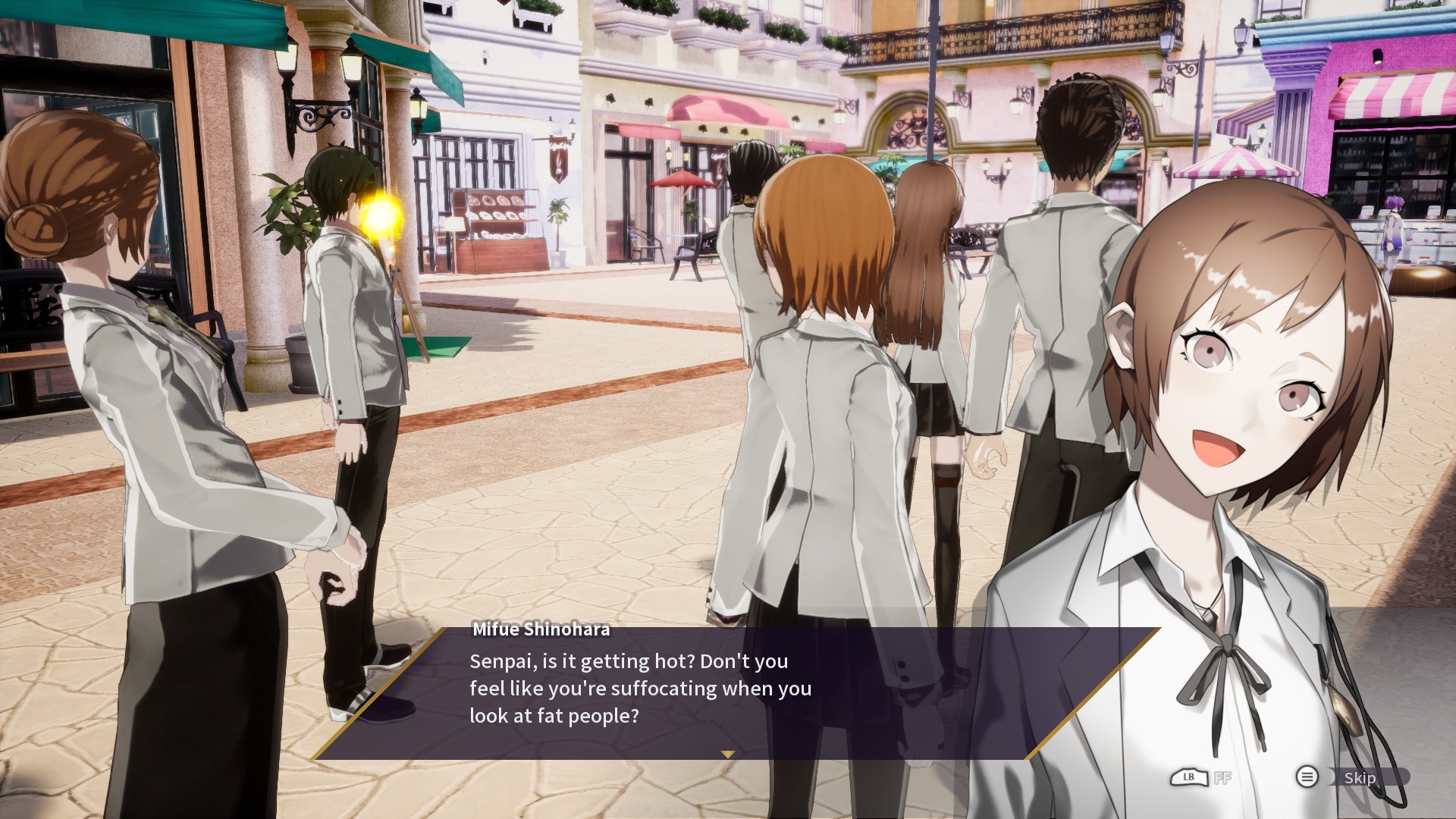
The second difference is that in this new version of Caligula Effect: Overdose, you will eventually have the choice to play as a character for both the protagonists and the antagonists at the same time. Yes, AT THE SAME TIME. That’s sort of mind-blowing, but you experience the thrill of being a Go Home Club fighter yearning for reality or an Ostinato Musician, brainwashing people to stay in Mobius against their will so you can live free of true life’s reality using the power of…J-pop and J-rock. It’s a revealing look into the psyche’s of two very different sets of people with opposing viewpoints who turn out to be more similar than you’d think, but with some having very socially unacceptable behaviors and others having more socially minor issues like low self-esteem.
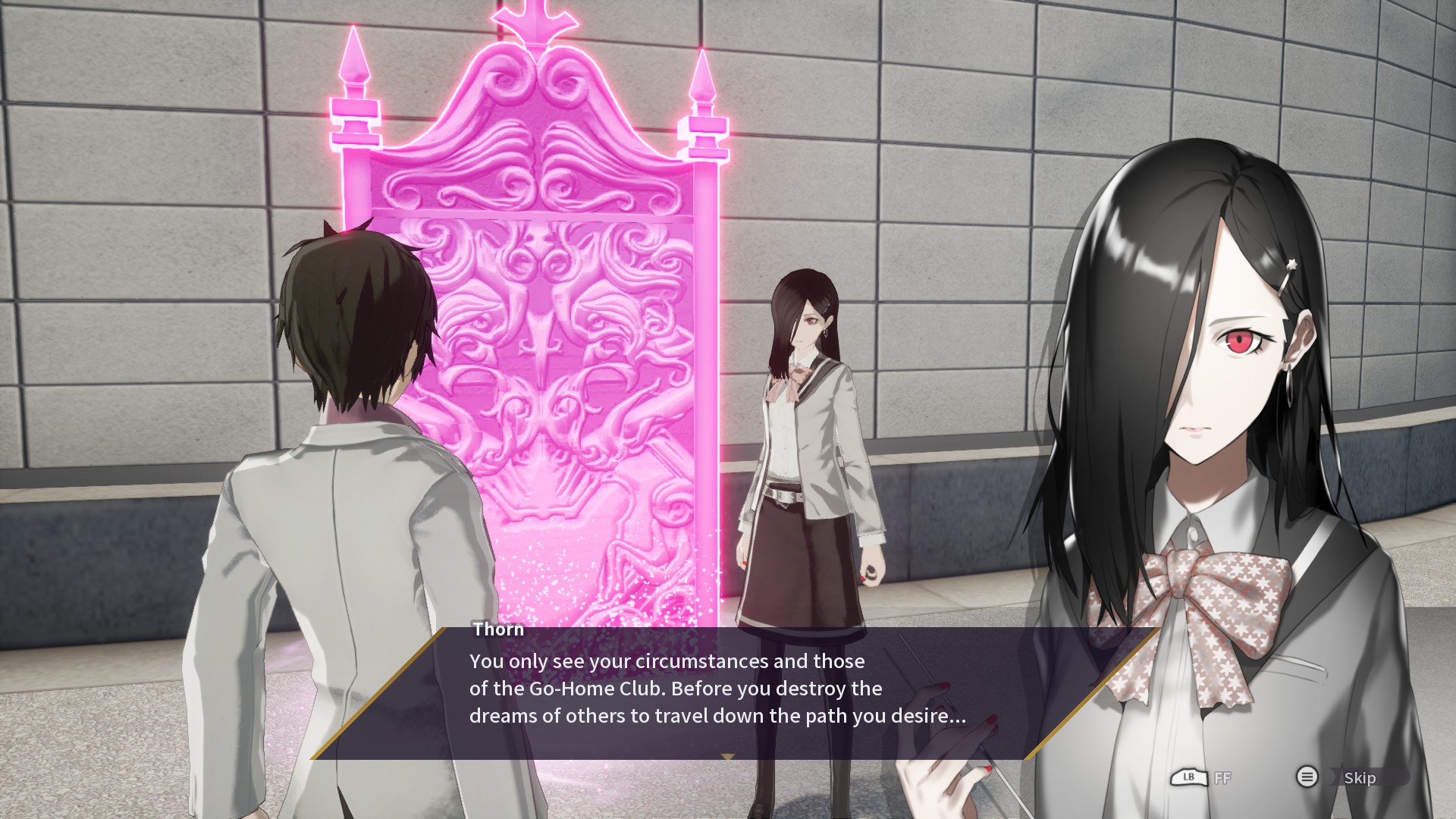
I feel the story and the game are intrinsically intertwined with choices leading to new side stories that you may or may not want to open up as you progress. One thing that stands out to me is that there are very few moments of character to character drama. Instead, it’s more about situational encounters and just straight up confrontational dialogue and idle chatter. I have mixed feeling about the approach, personally. On one end I think it’s missing interpersonal dramatic scenes, but then on the other end the game is not focusing on that at all because it’s more or less zeroing in on personal psyches and idiosyncrasies in a high school setting, which in and of itself is also quite interesting. In any case, don’t expect a gang-buddy party JRPG experience because there are always underlying darker tones right at the surface of the game.
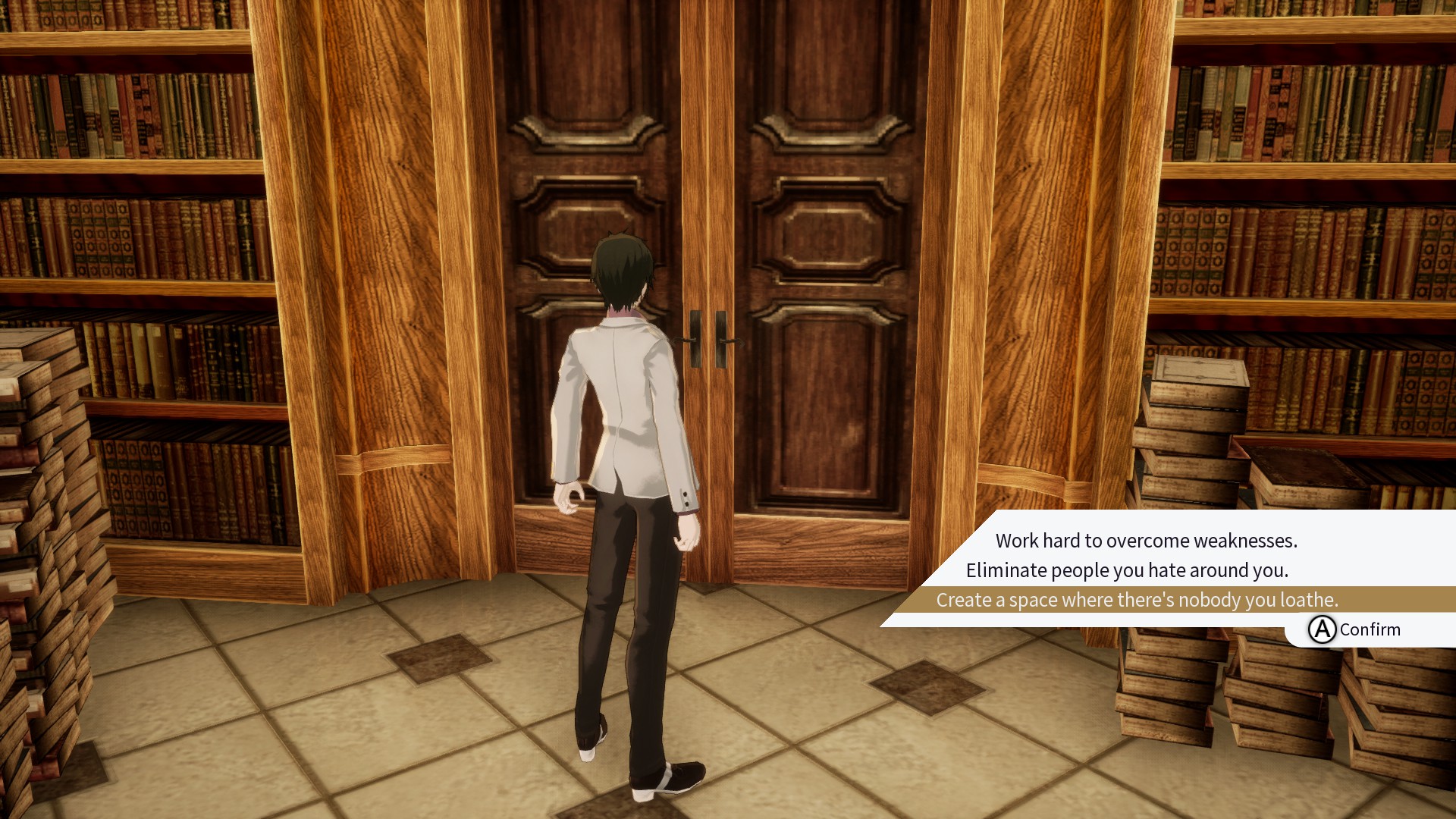
I feel like the dialogue tends to be open and revealing, yet keeps the students distant from one another at the same time. You are allowed into their viewpoints, but not so close as to make an emotional connection because their psyches tend to be somewhat perturbing. The side stories for the Go Home Club also seem to the less interesting compared to the conversations in the Ostinato Musician club, though I laughed at Suzuka’s several times. I think it’s all the idle chatter, there is simply too much of it and not enough substantial content to make the storyline gel more. Yet, I think that’s really the point. The characters are not meant to be likable, they are meant to be stark. As I said earlier, I have mixed feelings about it because while the story is well written, it’s lacking a magnetizing core that makes you care about the characters. There is some more bonding the futher you play, but it’s more tangential Instead, you are exploring the dark guilt-ridden areas of those character’s lives, and that’s generally is less motivating than you’d want in a storyline.
As for the differences between this PS4/PC/Switch version and the VITA version, this new version has several new characters and scenes, with two major new characters for each club, and even the gender you choose will affect the story and scenes that play out. You’ll be getting substantially more content than the previous VITA version. As for the content itself, it’s cohesive even if the levels are re-used for the Ostinato Musicians Club missions.
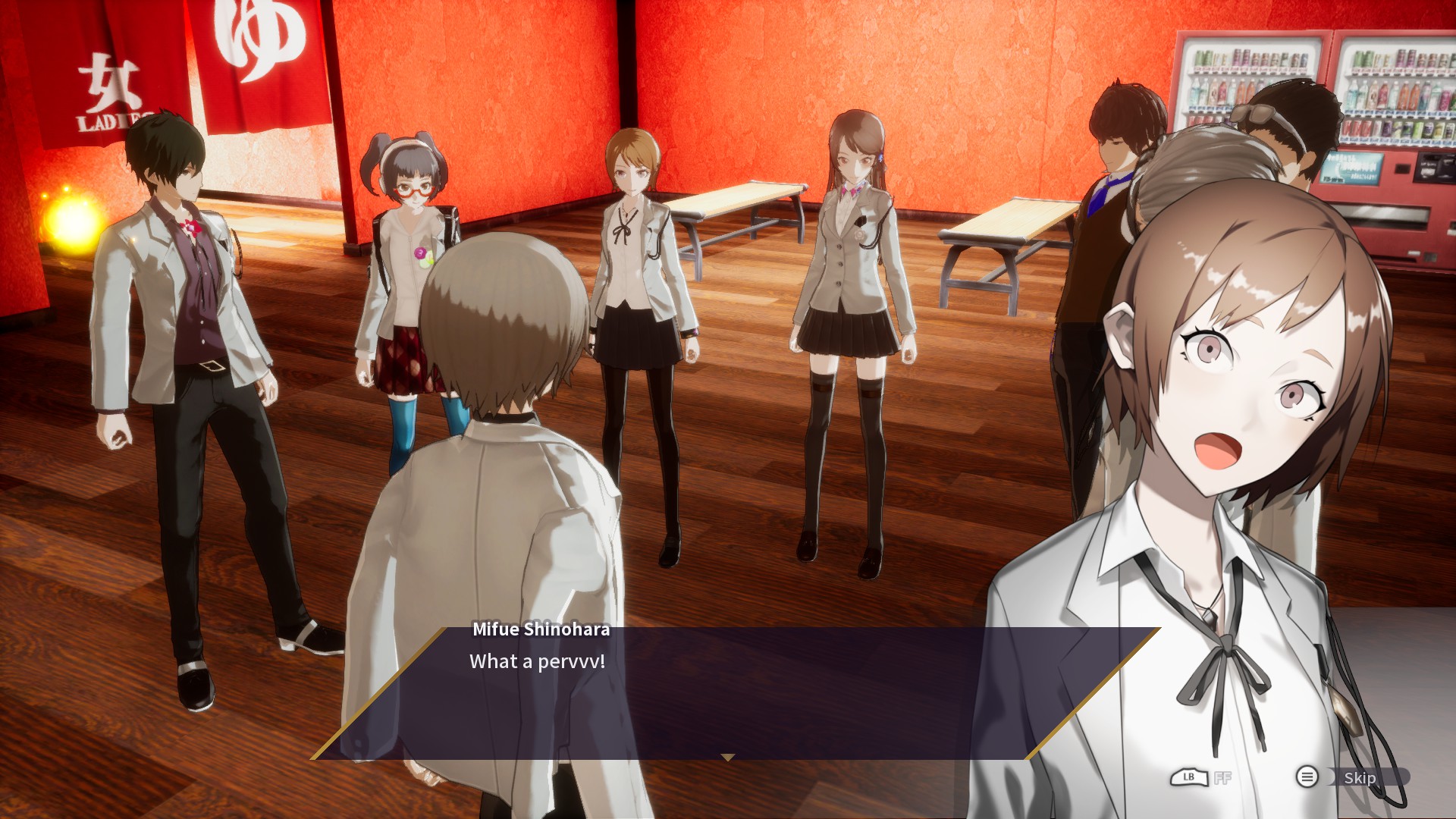
GamePlay
Each member of your party, whether you are playing as the good guys or the bad, has particular traits from their Catharsis Effect weapons that play out well in developing a strategic team that can attack how you like. Some are good at close range, others at long, still others can break the enemy’s guard or create “Risk” for opponents to make them vulnerable to attack. I always felt the balance of characters was well done for the combat, allowing players to play how they want to rather than be stuck with who is available. Even if you don’t want to fight, there is an auto-battle option, useful for grinding to level up.
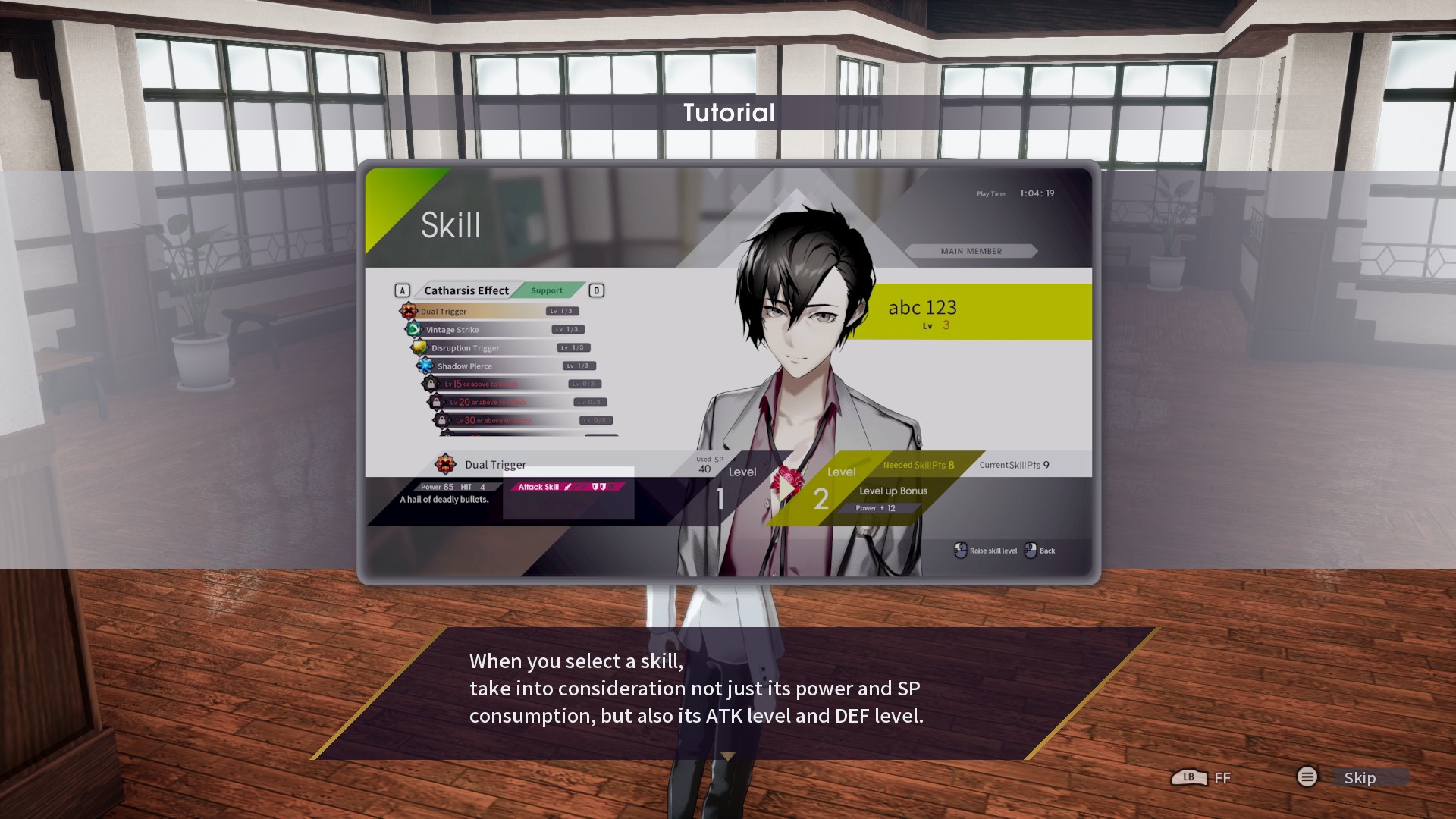
There is a very nice feature where you can see a predicted outcome of your attack choices before making them final, in case you want to revise your strategy. This is just a prediction, though, as sometimes the opponents do something unforeseen and you end up having to re-evaluate your next move. You get up to three moves in a turn to chain together, though be careful not to use up all your SP too quickly or you’ll have a few turns trying to run and recharge your SP and HP. Overall, the chain attacks are the main focus because single attacks lose a ton of momentum. It’s best to choreograph your attack with another member attack so that when you, for instance, kick someone upside the head and make them airborne the other party member can jump up and stab them a million times. It’s fun!
Attack choices are quite varied with a broad array of actions from a tabbed menu to select from. You could attack with your sword-gun, then dash across the arena to get out of the way from an attack, and then shoot the baddie in the back while you are at it. Your actions play out in the arena and I love that the physical layout of the arena grid is free-roaming area where you can plan out formations and tactical movement. There are also special moves you can power up over time, which carry on to the next battle if you like, and you use those to take down more powerful enemies, which is great for saving until a big boss fight.
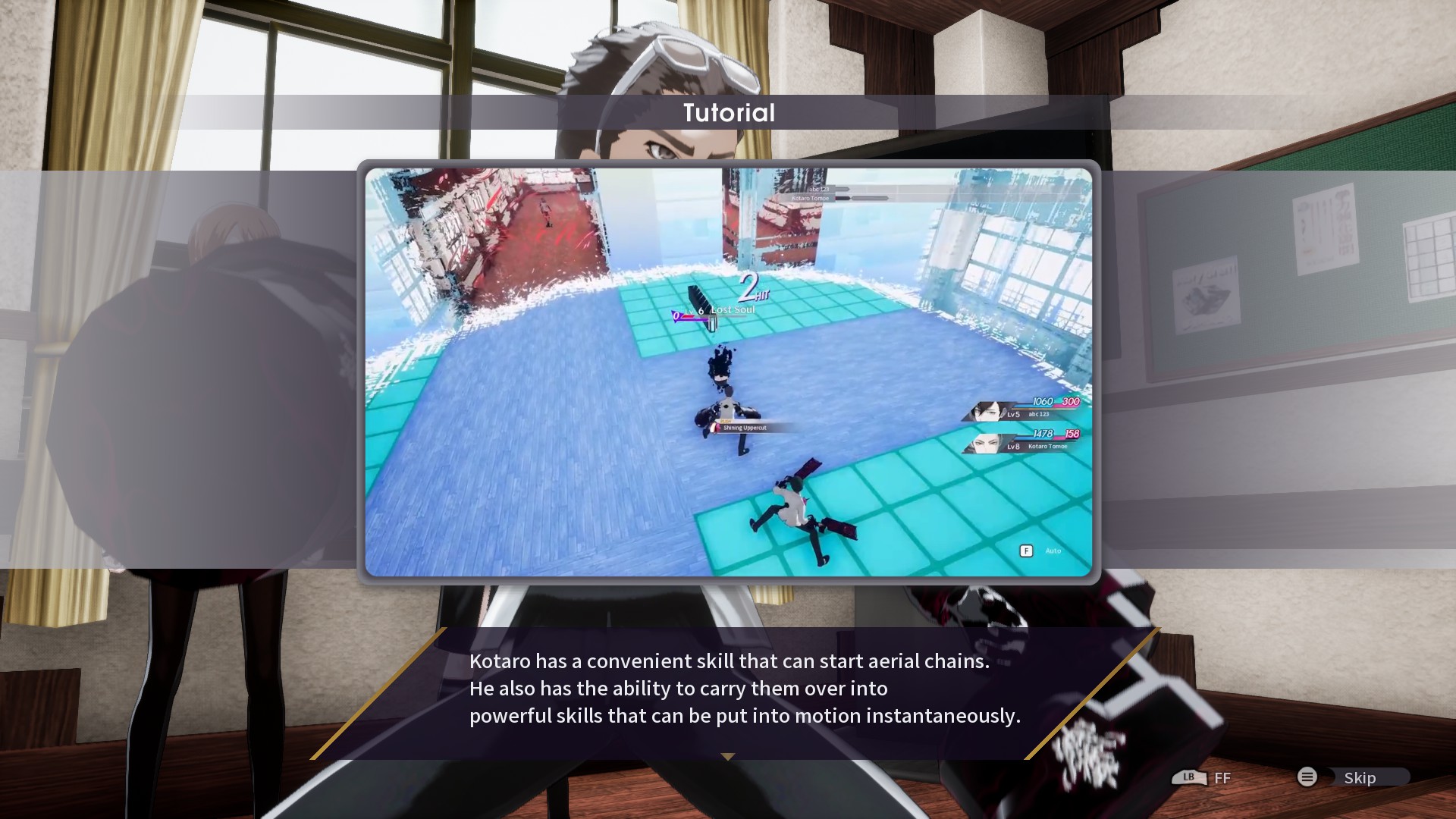
All of this leads to two things. One, battling anyone on the same level as you is more or less a bore. You may as well auto-battle all of those. The other thing is that anyone roughly 10 levels above you or higher will be neigh unbeatable. It’s all the battles in between that are fun, and often other baddies can just waltz on in and fight at any time, turning small battles into large scale wars in no time flat. It’s all kind of grindy, but I enjoyed not knowing what to expect and barely escaping. While the game sometimes limits how many party members you can play at a time, you have the option to load up to three others besides yourself, making for some exhilarating gameplay when you take on a whole gang of mean old digiheads. Find yourself in a place with nothing but enemies that are the same level as you and you will get bored in a few minutes, though, and you’d be better off auto-battling.
On top of the Catharsis Effect weapons, you can kill enemies to get equipment perks that boost your stats. There are numerous ones and even leveled up versions of the same stat boosters, so make it a point to get as many as you can while leveling up. You notice them guarded by very strong enemies or groups of enemies. There are also skills to be collected when you do this and you can use the skill points to level up your attacks for any party member one at a time. On top of these are World Rewards, of which I barely unlocked one so far and I’m not sure if they are worth it, but after 30+ hours of gameplay I haven’t needed to use them for anything.
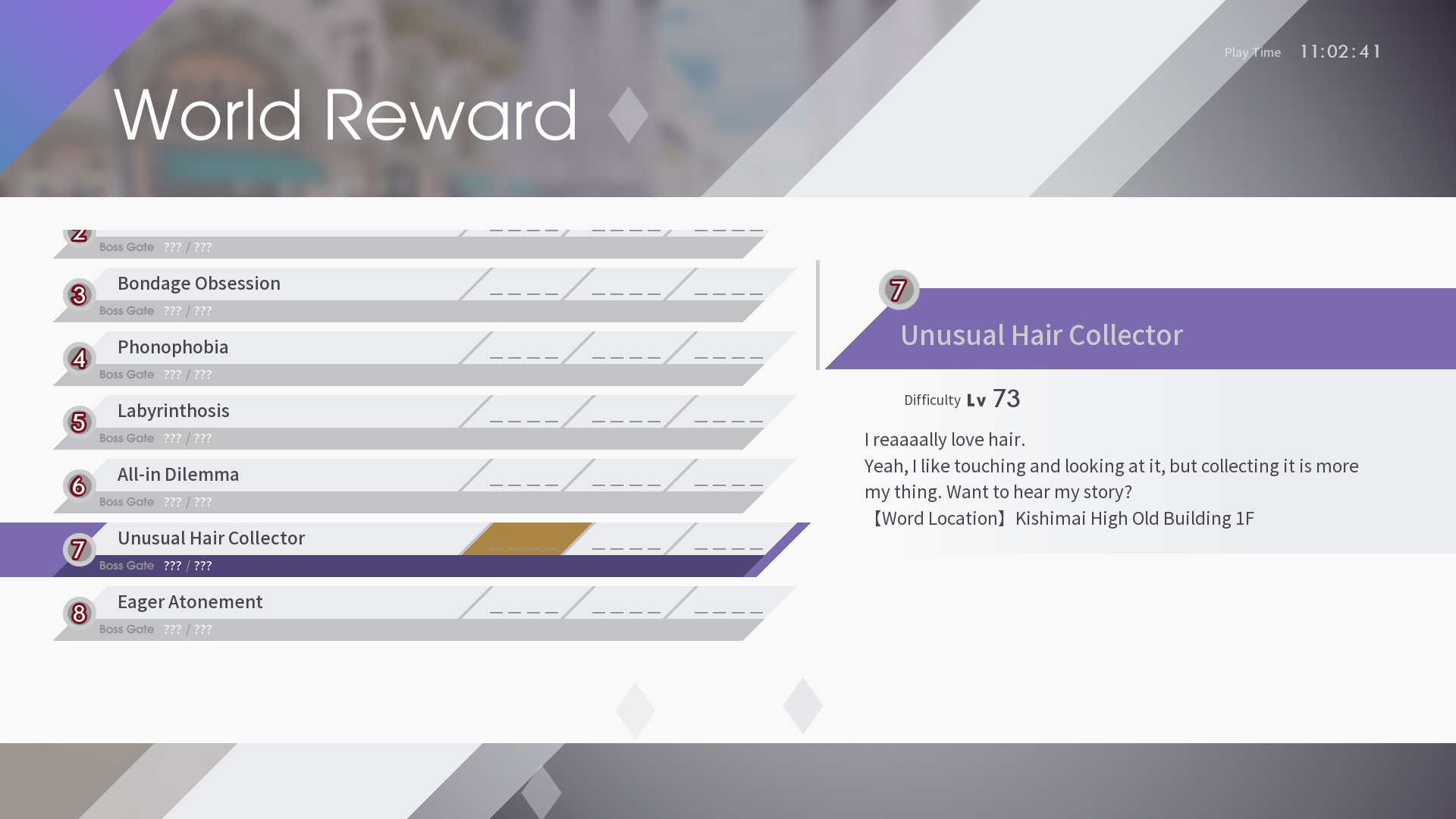
For the JRPG aspect, it’s quite entertaining when you have a good fight. You’ll use both tactical and strategic attacks as well as location movesets to affect your outcome, it’s a chess match at times with large groups and powerful foes. This is entirely limited by the number of enemies in a group and their level because if they are say within 4-5 levels of you then you don’t really have to try hard to win. The boss fights ended up being less than stellar because by the time I got to them, I’d be too OP. Yet, I don’t really mind to be honest. For more challenge, simply don’t level up much.
There is also a Causality Link system where you can work up NPC dialogue exchanges for trust and friendship to unlock social perks. I honestly gave up after a while, there are hundreds of students and I can’t keep track of hardly any of them. It’s a huge connected network map that mostly comes off as a confusing amount of gibberish. Shame really, because it looks like a great deal of effort was put into making it. Supposedly the NPC’s can start to join in on for battles when linked correctly. I have no idea and won’t likely ever figure it out.
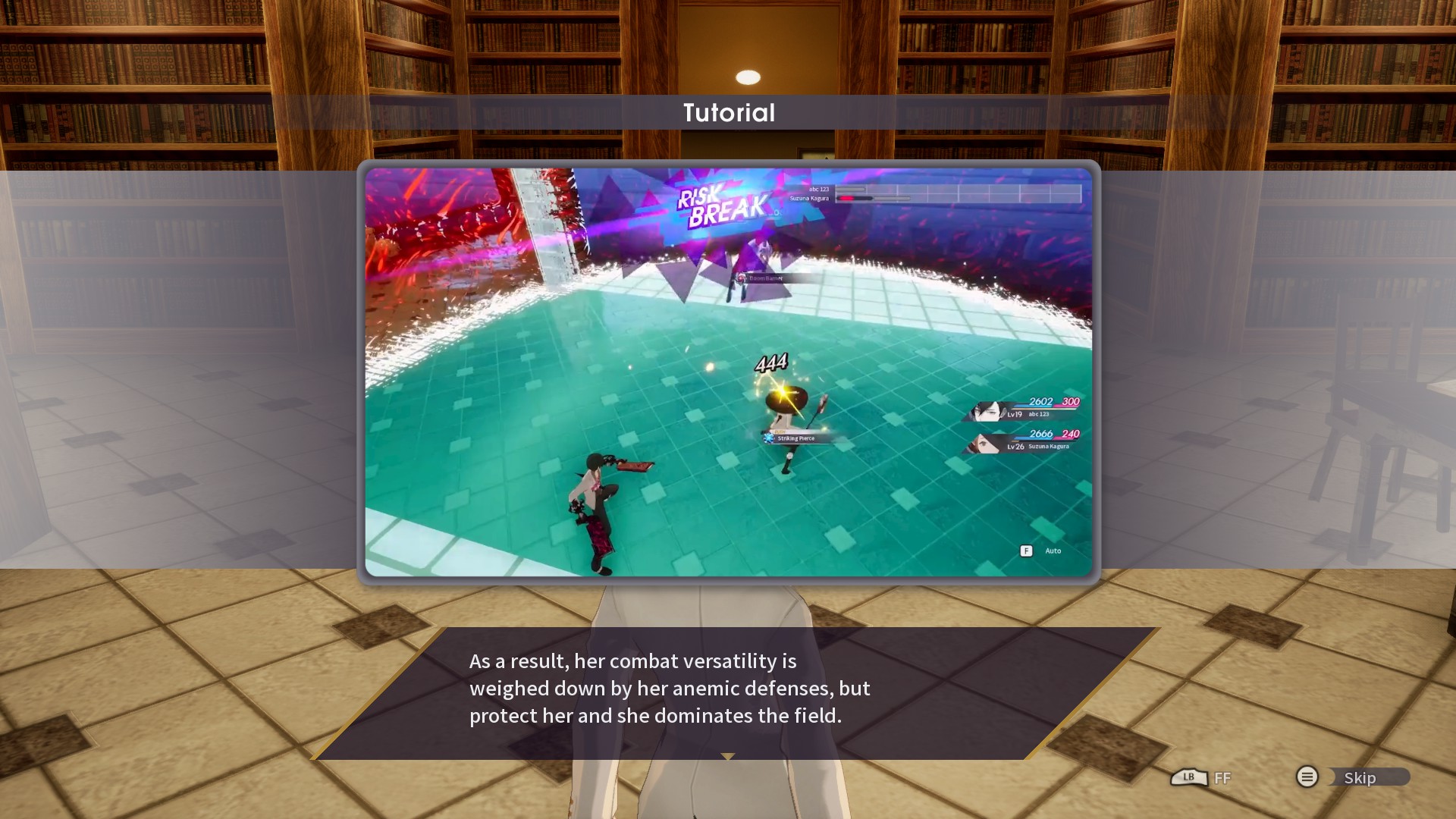
Graphics
I’ve seen some VITA gameplay and it was less than stellar. With the new overhaul in Unreal Engine, the graphics are considerably improved. However, the layouts are still quite bland looking and mostly consist of sparsely decorated halls and corridors with little to distinguish areas from one place to the next. You will have to expand the mini-map to cover a huge chunk of the screen just to be able to make your way through. It can be downright dizzying.
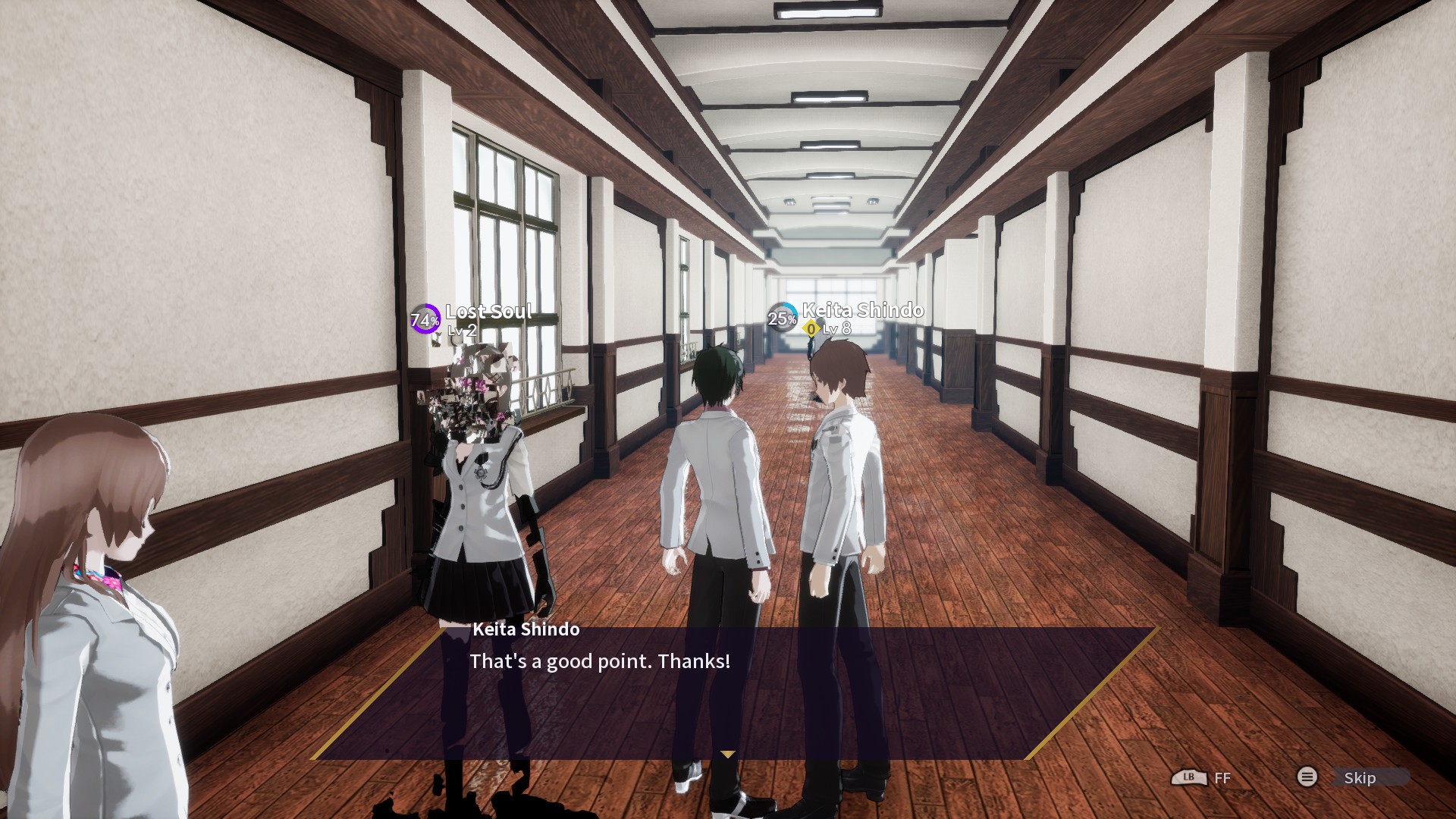
The combat has some great special effects, though you can tell the budget was limited when compared to a AAA production. Movement is quick and never lagged. As a matter of fact, I can run this game at 60 FPS at 1080p on my potato of PC, so no worries about not being able to run the game. With the anime style of graphics, it doesn’t wow the senses, but it’s adequate.
What is missing is some style. The environments feel very asset heavy and even though they look much better than the VITA version, it’s still mostly hallways and doors. You don’t get a sense of the location from the scenery or art style, and that is a shame. There are some great animations for the characters, though, and I think the art dept must have focused on that more than the game world, which if I had to pick I’d likely go with the characters as well, so I don’t blame them.
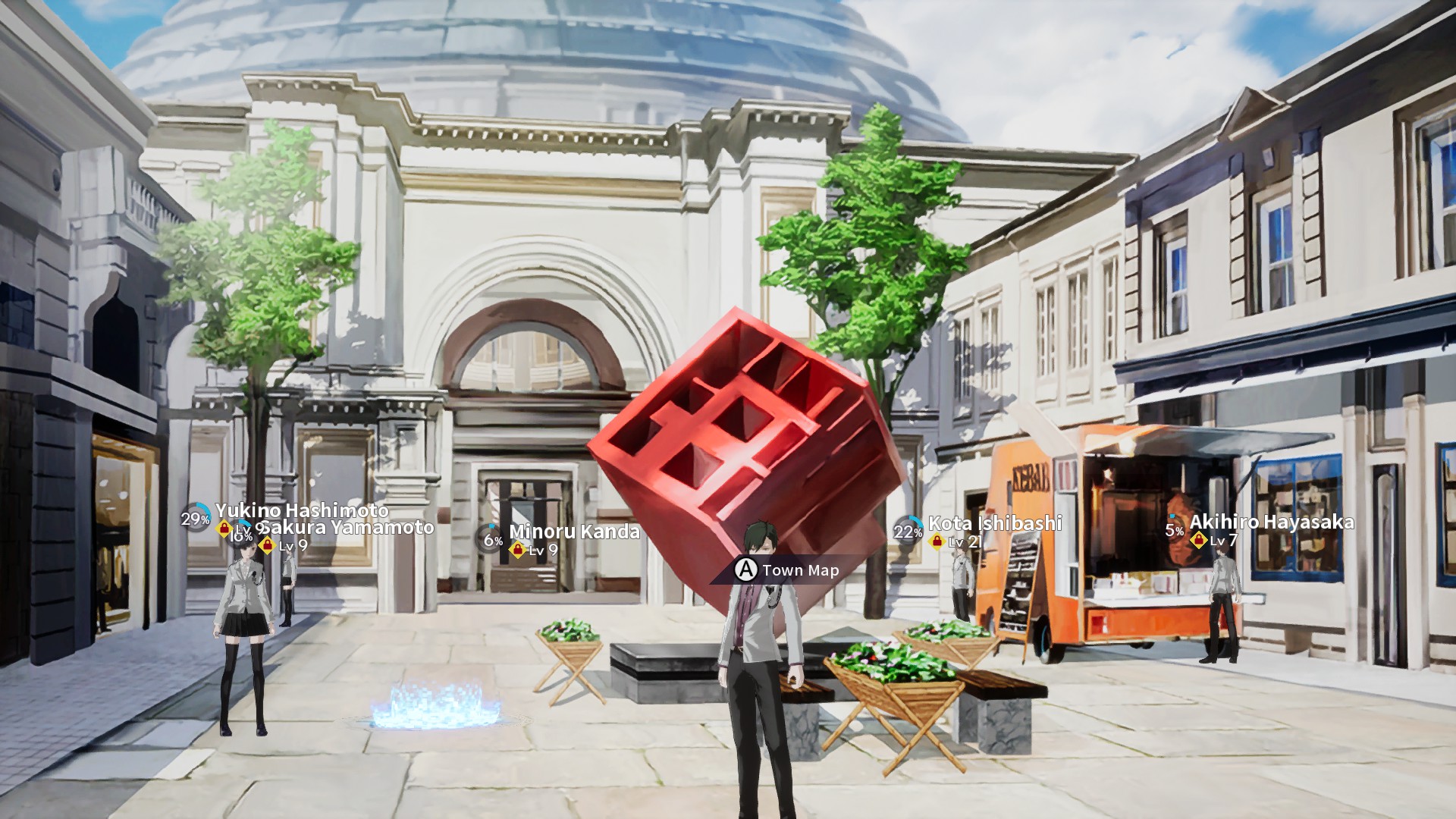
For the music, it wasn’t my favorite. While the tracks were thumping and exciting or cheerfully joyous, I couldn’t listen to it for hours. I turned the music down to almost zero to be honest, leaving the voice and effects at full blast. I seriously enjoyed the voice actors and thought they did a tremendous job of vocalizing the script, even though I don’t speak any Japanese. The emotion in their voices to convey their feelings was top notch.
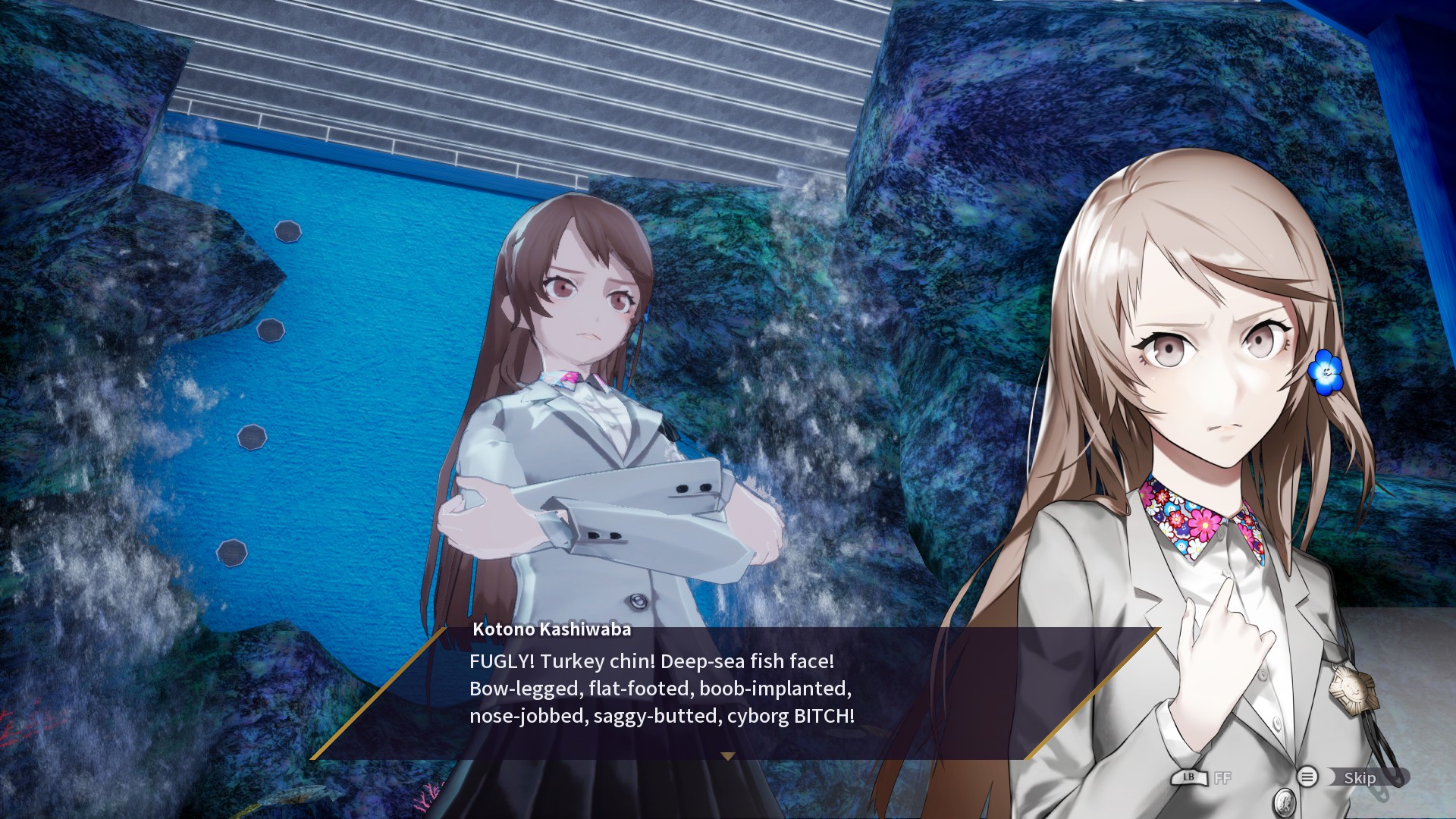
Verdict
The Caligula Effect: Overdose focuses more on digging out the deeper, most dark aspects of people’s nature. It does not hold back and for that, I find the title quite intriguing even if the game suffers a bit from feeling as exciting or emotionally involved. In an online social media age of trolls and cruel tweeters where people quite often take off their “real-life” masks to reveal how nasty they want to be because they think no one is looking, it’s very relevant.
As the game progresses, you do see there is a tug of war as to how the gameplay can become quite repetitive from maze-like area to the next and stack that up against your desire to see if what the characters say is fascinating, boring, repulsive, or all the above.
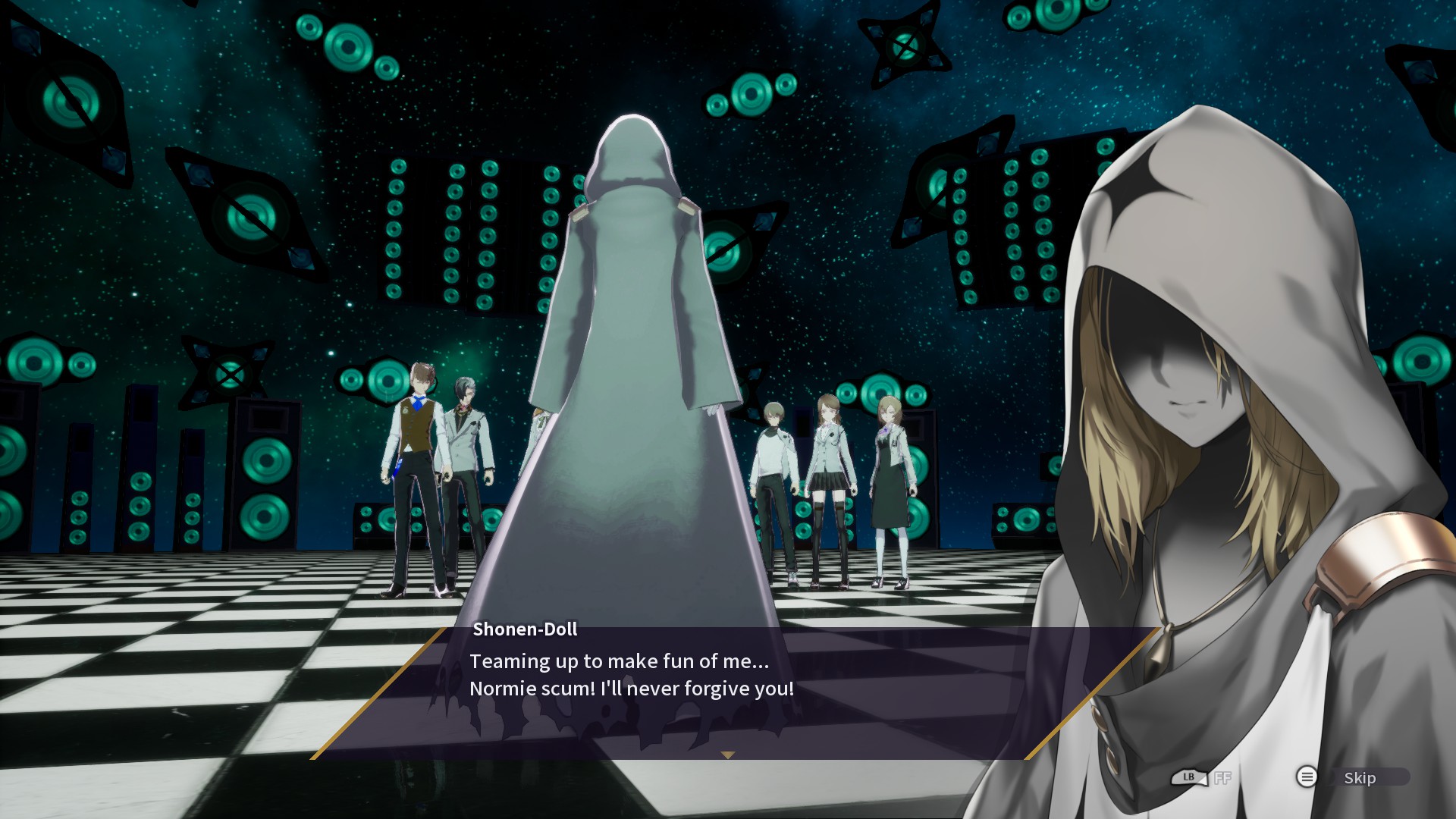
The combat is grindy, but gives you all the tools to play as you like and is relatively easy. It does get tiring until you get to some challenging higher level NPC’s to fight and the maze-like levels can be a confusing traversal. The auto-battle is helpful and there are more than enough save areas in the game to keep on going. The chain attacks and predictive models for combat were great and I enjoyed that aspect the most. Granted, lots of the grinding is better off on auto-battle until you get a large group of high-level enemies.
While Caligula Effect: Overdose does resemble a Persona game on paper, it really isn’t one. Yes, it looks like a Persona-like on the outside with social leveling, dungeon crawling, and combat based weapons based on the character’s persona, but that’s really about it. It doesn’t look the same, feel the same, have the same pacing, style, or the same type of story. So, don’t think this is a Persona game if you had that in mind.
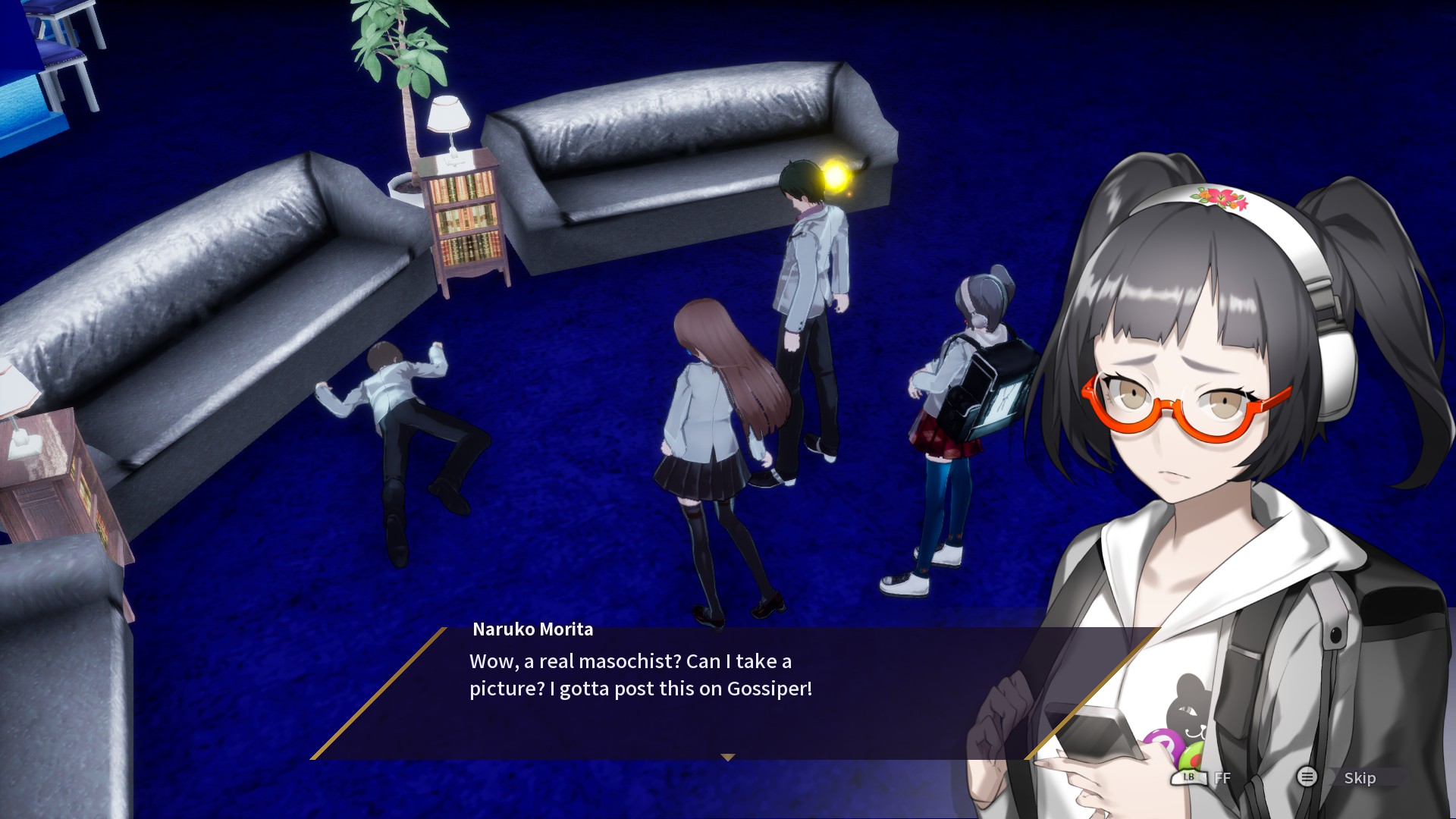
I really enjoyed delving into these differing psyches and looking at both sides of the story. I just don’t think it’ll appeal to everyone, as they will be looking for more interpersonal dialogue that goes beyond the casual conversations and soliloquies that you uncover as the character roster unfolds. What parts you do uncover can very well be bland at times, so you never really connect with any of the characters, which in turn doesn’t give much incentive to continue playing. Yet, I think that is what the game is shooting for. It’s not trying to be fun or emotionally heart-tugging, it’s not even trying to be friendly. The Caligula Effect: Overdose just wants to show a world where there are raw personas devoid of any pretense, and that is the heart of the game.
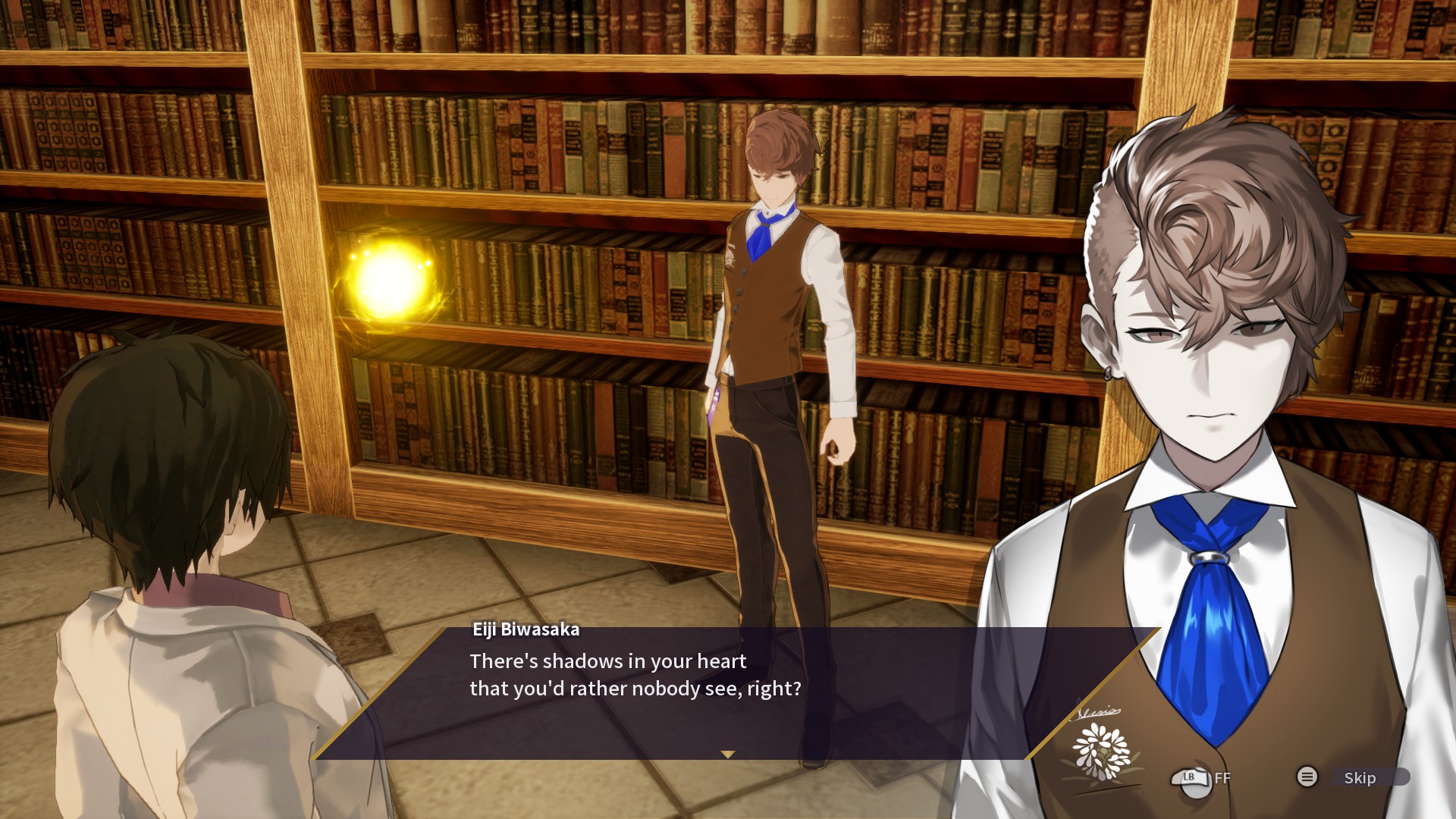
Do not expect a group-buddy-fight-the power game at all. It is all about coming to grips with the darker sides of your inner desires, even if those are considered perverted by society. It’s a game that addresses hidden feelings and mostly guilty pleasures. You can even play as both the bad guy and the good guy at the same time, so for originality it gets high marks from me. It just falls short with less than captivating characters, dizzying levels that look so similar you need a full-screen mini-map, a so-so art style, and some barely engaging combat at times.

